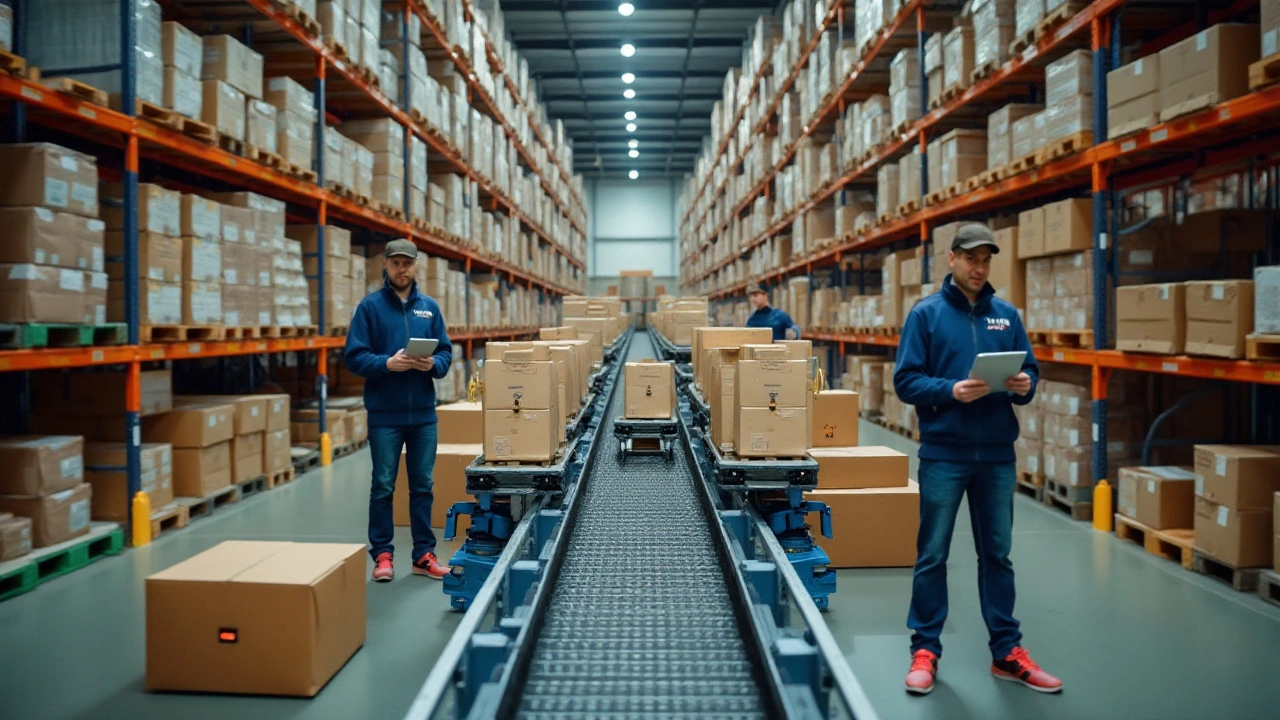Online Business Logistics: Deliver Faster, Save Money, Grow Sales
If you run an online store, the speed and cost of getting products to customers can make or break your brand. A happy buyer expects the order on the door within a day or two, and a surprise fee can turn a repeat shopper into a one‑time buyer. Let’s cut through the jargon and give you practical actions you can start using right now.
Why Delivery Speed Matters for Online Stores
Fast delivery isn’t just a nice‑to‑have; it’s a buying signal. Shoppers compare sites on price, product range, and how quickly the item arrives. When you promise next‑day or same‑day service and actually deliver, you build trust and encourage higher cart values. A study from a UK market analysis showed that 68% of customers were willing to pay up to 10% more for faster shipping. That extra margin can cover your courier costs while keeping the profit line healthy.
Speed also reduces the chance of order cancellations. If a buyer sees a long estimated delivery date, they might abandon the cart or switch to a competitor. By offering clear, realistic timelines – like "Delivered by 7 pm tomorrow" – you set expectations that you can meet, which improves your store’s reputation.
Smart Ways to Cut Shipping Costs Without Slowing Down
Cheap shipping doesn’t have to mean slow shipping. First, compare rates from the big players – UPS, FedEx, DHL, and the UK‑based Royal Mail – but also look at niche couriers that specialize in parcels under 10 kg. Many of these smaller firms have lower base rates and flexible pickup options, especially if you schedule regular collections.
Second, use your order volume to negotiate. Even if you ship only a few dozen parcels a week, ask for a business discount. Couriers often have hidden tiered pricing that isn’t advertised online, and a quick call can unlock a better deal.
Third, pack smarter. Dimensional weight can add unexpected fees, so choose boxes that fit the product snugly and avoid oversized packaging. Many online businesses waste money by using standard large boxes for small items – a simple change can shave off 15‑20% of shipping costs.
Fourth, offer tiered shipping options at checkout. Show customers a cheap 2‑day option alongside a premium next‑day service. By giving a clear price break, you let shoppers decide what matters most to them while you keep the cheaper method on the table.
Finally, take advantage of technology. Real‑time rate calculators and API integrations pull live prices from multiple carriers, ensuring you always get the cheapest available option for each order. This is the same tech used by big e‑commerce platforms and can be added to most shopping cart systems.
Putting these steps together – fast, reliable timelines and cost‑smart shipping choices – creates a winning formula for any online business. You’ll see higher conversion rates, more repeat customers, and a healthier bottom line without sacrificing the quality of service.
Ready to level up your logistics? Start by auditing your current carrier contracts, measuring your average parcel size, and testing a rate‑shopping tool for the next week. Small tweaks now can lead to big gains as your store grows.
E-commerce for Beginners: The Basics and Beyond Logistics
Curious about how e-commerce actually works behind the scenes? This article breaks down what e-commerce is, how beginners can set up shop, and why logistics play a huge role in making it all run smoothly. Packed with tips on choosing products, shipping faster, and avoiding beginners' mistakes. Find out what really happens from checkout to delivery truck, and see how even small details can make or break an online store. If you're just starting out, this guide gives you a clear picture—without all the complicated jargon.
Starting Your E-commerce Journey: Key Steps for Success
Jumping into e-commerce can be exciting and challenging. This article guides beginners on how to start an online business from scratch, offering detailed insights into logistics, sourcing, and choosing platforms. It highlights considerations such as inventory management, shipping solutions, and customer service. Learn about the importance of technology and marketing strategies in building a successful online store. With these comprehensive tips, aspiring e-commerce entrepreneurs can navigate this dynamic landscape effectively.
Understanding E-commerce: The Backbone of Online Business Logistics
E-commerce has transformed the retail landscape, making it easier for businesses to reach consumers globally. This article delves into the intricacies of e-commerce logistics, which is essential for the smooth functioning of online sales. Effective logistics ensure that products move efficiently from seller to buyer, leveraging advanced technologies and partnerships. Readers will learn about the key components, challenges, and strategies to optimize e-commerce delivery systems. Aimed at both novices and experienced professionals, the piece provides insights on how to keep businesses competitive in the digital age.
© 2025. All rights reserved.



